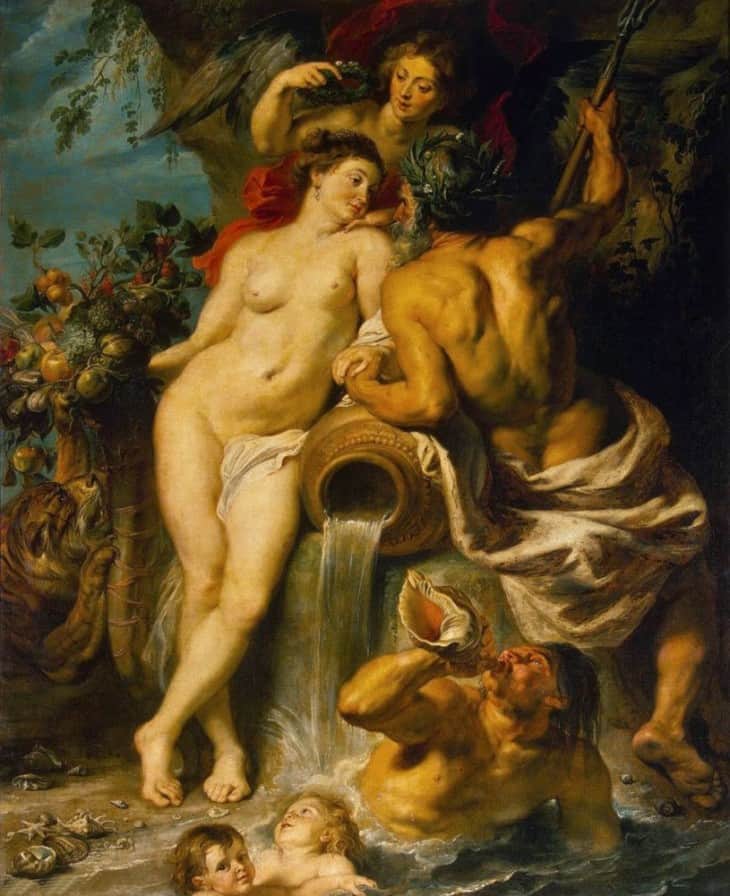
The secrets of the Old Masters
The paintings of the Old Masters fill us with awe due to their colours. But the pictures we see today in our art galleries, safely preserved for the modern age, differ from what the artist’s contemporaries would have beheld.
One of the characteristics of oil paintings is that they change over time. This is influenced by the paints selected by the artist, the technique used, the finish applied to the work and the conditions in which it is stored. And that’s to say nothing of the tiny mistakes that a talented master may have made while experimenting with new techniques. It’s for this reason that what we see on the canvas may, over time, start to differ from the original work.

The Old Masters’ Painting Style
Oil painting is a technique that comes with a huge advantage: the artist can spend years painting the picture, gradually shaping the outline and painting in the details with thin layers of paint (a glaze). Corpus-based painting, whereby artists try to give their painting an air of completion straight away, is not, therefore, typical of the classic oil painting style. Deliberately applying the paint in layers makes it possible to achieve remarkable hues and effects, since, during glazing, each previous layer is visible underneath the next one.
The Flemish painting technique, so beloved by Leonardo da Vinci, involved the following stages:
– On a light ground, a sketch was drawn using one colour, with the outlines in sepia and the main shades;
– A thin underpainting was then painted, with the contours of volume;
– The final stage was the application of several glazed layers of overtones and the detail.
Over time, however, Leonardo’s dark-brown outline began, in spite of the thin layer, to show through beneath the painted image, making the painting turn darker in the shaded areas. In the main layer he often used burnt umber, yellow ochre, Prussian blue, cadmium yellow and burnt sienna. The final layer of paint that he applied was so thin that it was impossible to see with the naked eye. The sfumato (‘toning down’) method that he himself devised enabled him to do this with ease. The secret to it is to use a very watery paint and a dry brush.

Rubens, Velazquez and Titian all used the Italian method. It involves the following stages:
– Applying a coloured ground to the canvas (with any pigment added);
– Transferring the outline of the image onto the ground using chalk or crayon and rendering it with a suitable paint;
– An underpainting, thick in places, particularly in the areas of the painting that are illuminated, and completely absent elsewhere – with the colour of the ground left as it is;
– The final work with 1 or 2 semi-glazes, or, less commonly, with thin glazes. In the case of Rembrandt, the layers in his paintings could be up to a centimetre thick in total, but he was an exception.
In this technique, special attention was paid to applying additional covering shades, which made it possible to neutralize the saturated ground in places. For example, a red ground could be neutralized using a grey-green underpainting. This technique was faster than the Flemish method, so clients commissioning paintings preferred it. If the wrong pigment colour and final-layer shade were chosen, however, the painting could be ruined.

The colours of the painting
To make a painting harmonious, the power of overtones and complementary colours is brought to the fore. There are also some little tricks that can be used, such as applying a coloured ground, as is customary in the Italian method, or covering the painting with a pigmented varnish.
Coloured grounds can be glue-based, emulsions or oil-based. Oil-based grounds are a pasteous layer of oil paint of the required colour. While a white primer creates a glow effect, a dark one lends depth to the colours.
Rembrandt painted on a dark-grey ground; Rubens used the English red and umber pigments. A darkening of the canvas was the fate that awaited anyone using too many earthy colours (sienna, umber, dark ochre, etc.).

Varnishing
Besides earthy colours which grow dark over time, resin-based finishing varnishes (rosin, copal, amber) also alter the brightness of the painting, lending it yellow hues. In order to age a canvas artificially, ochre pigments, or any similar ones, are specially added to the varnish. Over-zealous attempts to make the canvas darker will probably result in there being too much oil in the work, however. They could also lead to cracks appearing. This ‘craquelure’ effect, however, is usually associated with the use of half-wet paint, which cannot be used in oil painting: artists only paint on a layer that has dried out or one that is still wet, otherwise it will need to scraped off and painted again.







